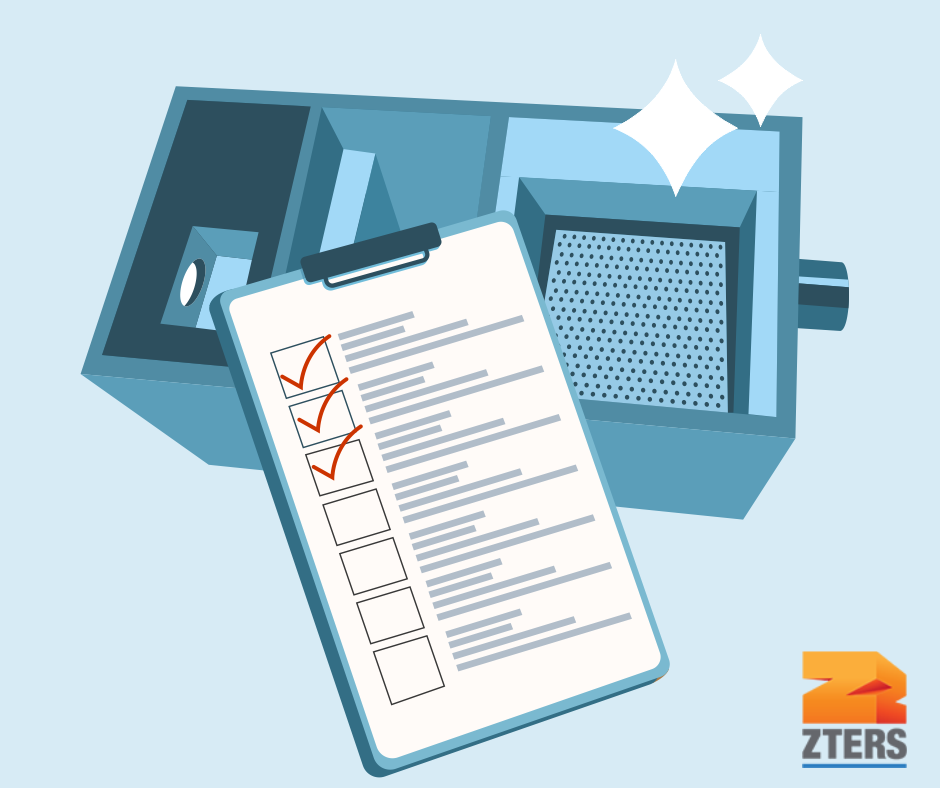In the world of food service establishments, managing wastewater can be a significant challenge. Fats, oils, and grease (FOG) are generated in substantial quantities and if not properly managed, these substances can wreak havoc on municipal sewer systems and ultimately harm the environment. To mitigate this issue, regulatory bodies like the Environmental Protection Agency (EPA) have established guidelines for grease trap requirements.
In this blog post, we will delve into the EPA’s guidelines, outlined in the National Pretreatment Program and explore the importance of adhering to these requirements to maintain environmental compliance. If you’d like to schedule grease trap cleaning services for your business, get in touch with ZTERS.
Understanding Grease Trap Systems
Before we dive into the EPA’s guidelines, let’s briefly understand what grease traps are and how they function. A grease trap, also known as a grease interceptor, is a plumbing device designed to capture FOG and solid particles before they enter the wastewater system.
It works on the principle of buoyancy, where grease and oils float on top of water, allowing the trap to separate and retain these substances while allowing clear water to flow out. Check out our comprehensive grease trap 101 post for more.
The EPA’s Role in Grease Trap Regulations
The EPA plays a crucial role in safeguarding the environment and public health. Through the National Pollutant Discharge Elimination System (NPDES), the agency aims to control water pollution by regulating discharges into municipal sewer systems and other waters.
The article “Pretreatment Standards for Grease Management in Food Service Establishments” outlines the specific requirements that food service establishments must follow to effectively manage FOG and comply with the NPDES program.
Key Grease Trap Requirements
The EPA’s guidelines primarily focus on food service establishments such as restaurants, cafeterias, and commercial kitchens, as they are significant contributors to FOG pollution. Some of the key requirements outlined in the article include:
Need Grease Trap Cleaning?
Speak with an account manager for a free quote.
- Grease Trap Sizing: The EPA recommends sizing grease traps based on the flow rate of wastewater and the amount of grease generated. Proper sizing ensures that the traps can effectively capture FOG and solid materials.
- Regular Maintenance: Food service establishments are required to maintain and clean grease traps at regular intervals to prevent blockages and overflows. Neglecting maintenance can lead to sanitary issues, environmental harm, and potential legal repercussions.
- Disposal of Grease Waste: Disposing of collected grease waste must be done responsibly and in compliance with local regulations. Many areas have specific guidelines for the disposal of FOG waste to ensure it does not harm the environment.
- Record Keeping: Keeping detailed records of grease trap maintenance, cleaning schedules, and disposal activities is essential for demonstrating compliance during inspections.
Houston’s Grease Trap Ordinances and Laws
In the Houston area, local authorities have implemented specific ordinances to tackle the challenges posed by FOG. While the exact requirements may vary slightly depending on the city’s jurisdiction, some common elements of Houston’s grease trap ordinances include:

- Grease Trap Installation: Food service establishments in Houston must install grease traps that meet the city’s sizing standards to effectively capture FOG.
- Regular Inspection and Cleaning: Regular inspections and cleaning of grease traps are mandated to prevent blockages and ensure proper functionality.
- Grease Waste Management: Houston enforces strict guidelines for the responsible disposal of grease waste, reducing the risk of sewer system damage.
- Compliance and Penalties: Periodic inspections are conducted to ensure compliance with grease trap requirements, and non-compliance may lead to penalties, fines, or business restrictions.
The Environmental Impact of Grease Trap Requirements
Complying with grease trap requirements not only helps food service establishments avoid costly penalties and legal actions but also has a broader positive impact on the environment. By effectively managing FOG, grease traps prevent these substances from entering sewer systems and water bodies, reducing the risk of clogs and sewage overflows. This, in turn, preserves water quality and protects aquatic life from the harmful effects of FOG pollution.
Grease trap requirements set by the EPA serve as crucial guidelines for food service establishments to manage fats, oils, and grease responsibly. Adhering to these guidelines not only helps businesses stay in compliance with environmental regulations but also plays a significant role in safeguarding the environment and public health.
By implementing effective grease trap systems and maintenance practices, food service establishments can contribute to a cleaner and healthier ecosystem for current and future generations.
Give ZTERS a call to learn about how we can help with your grease trap cleanings and drain line services TODAY!

